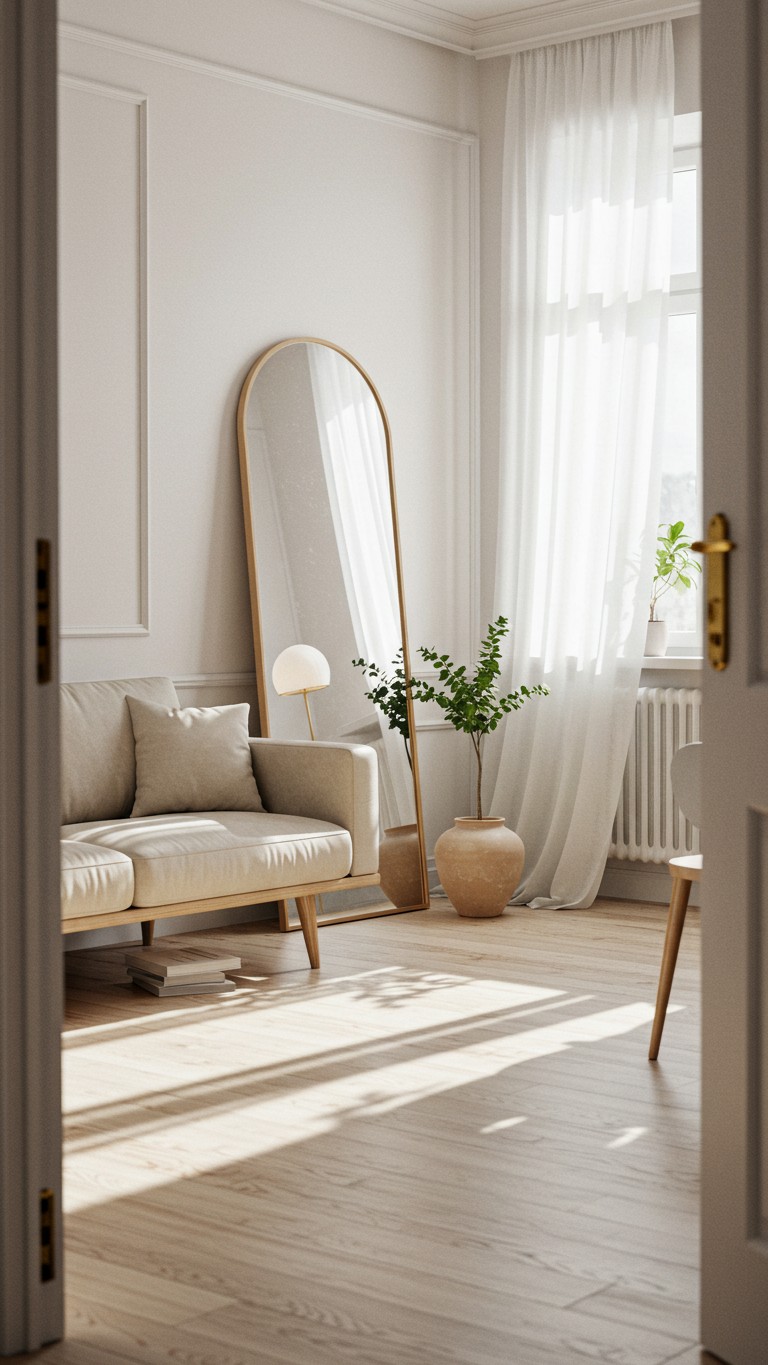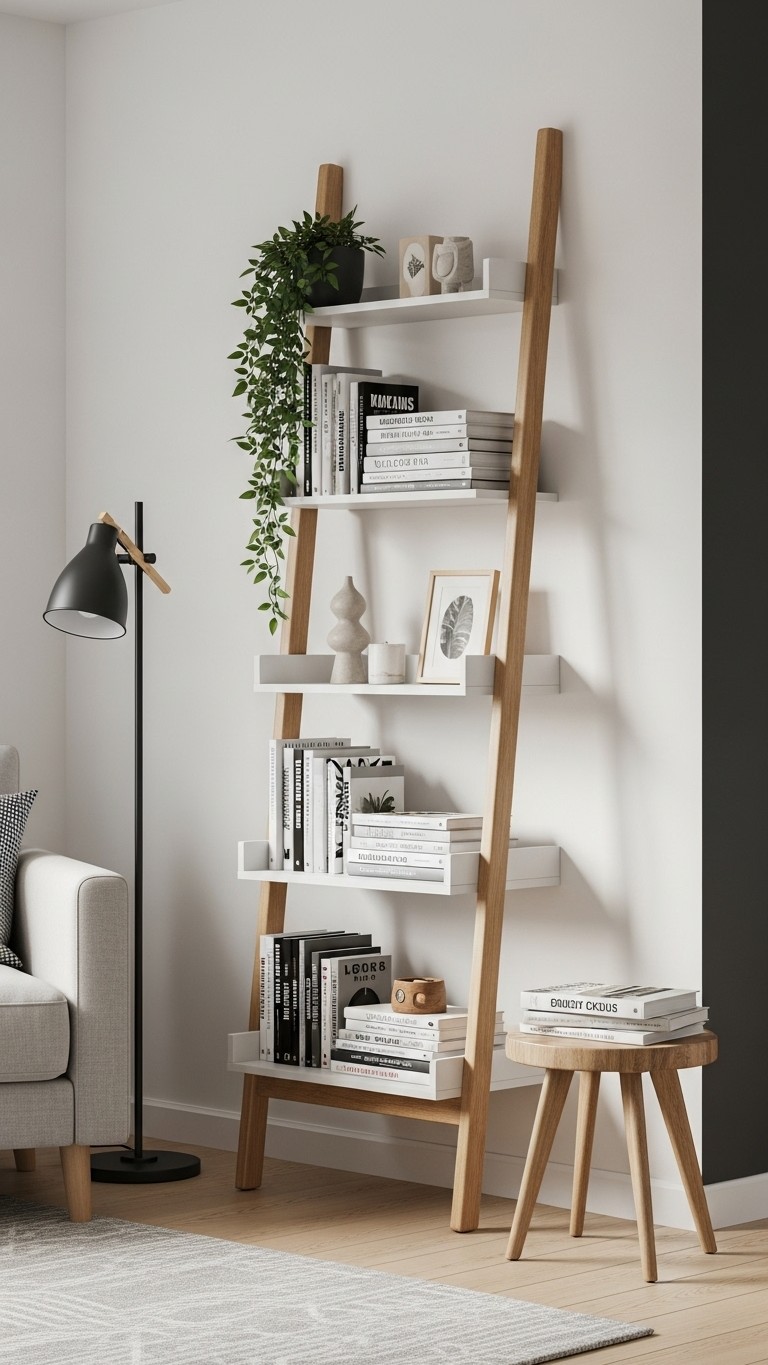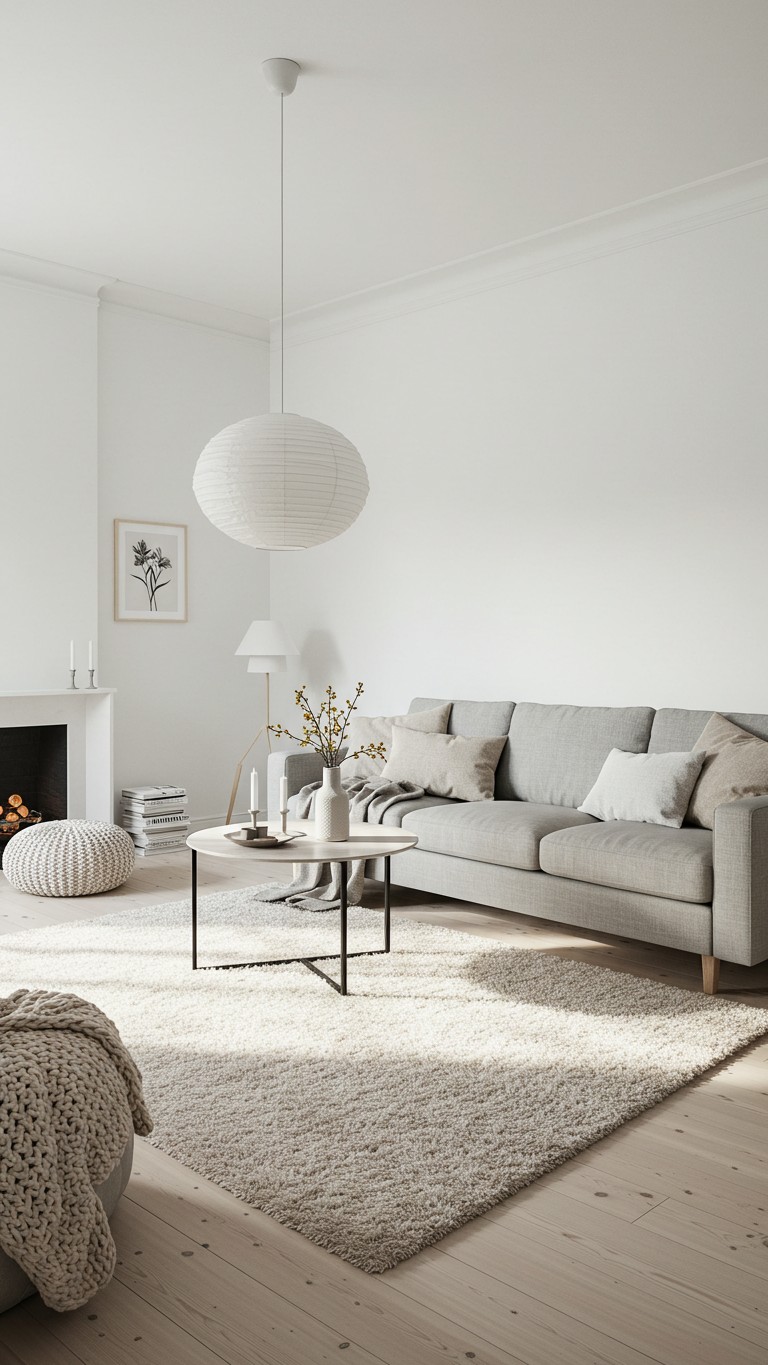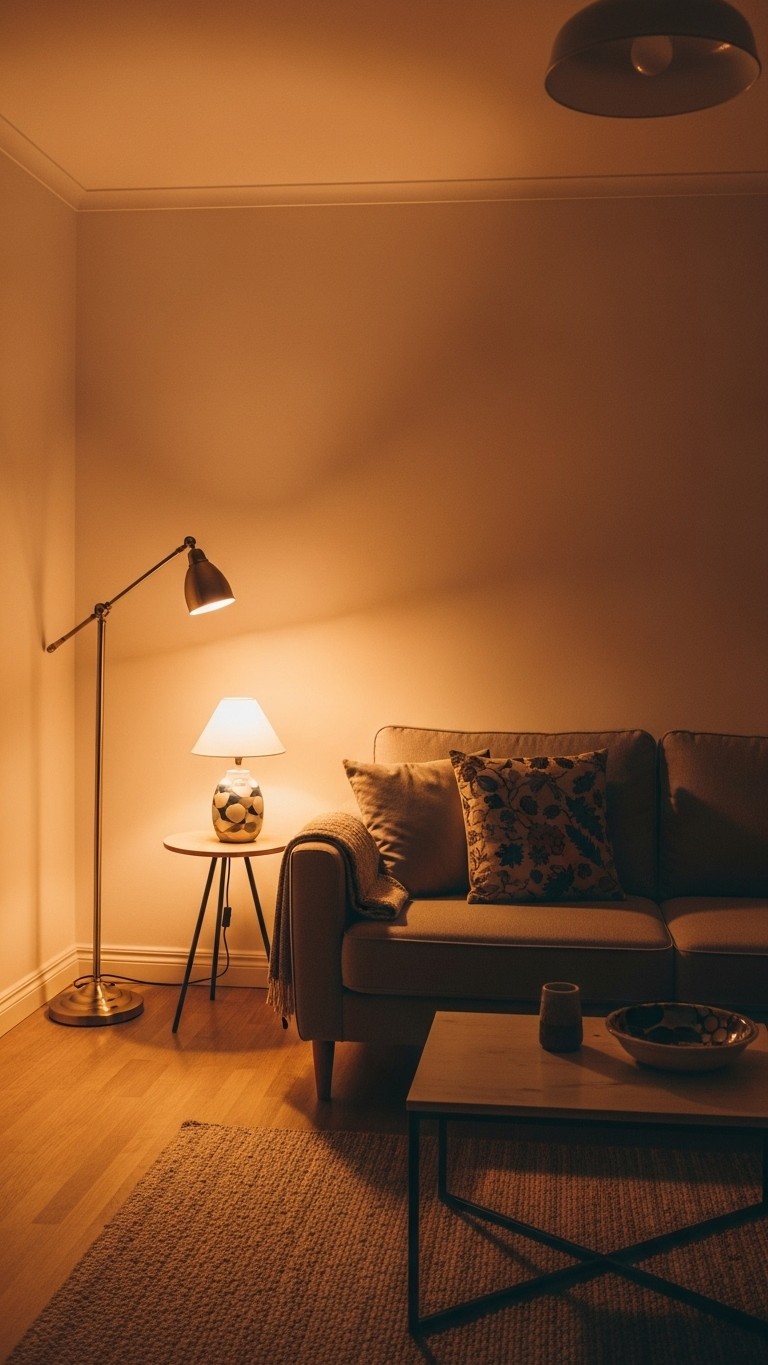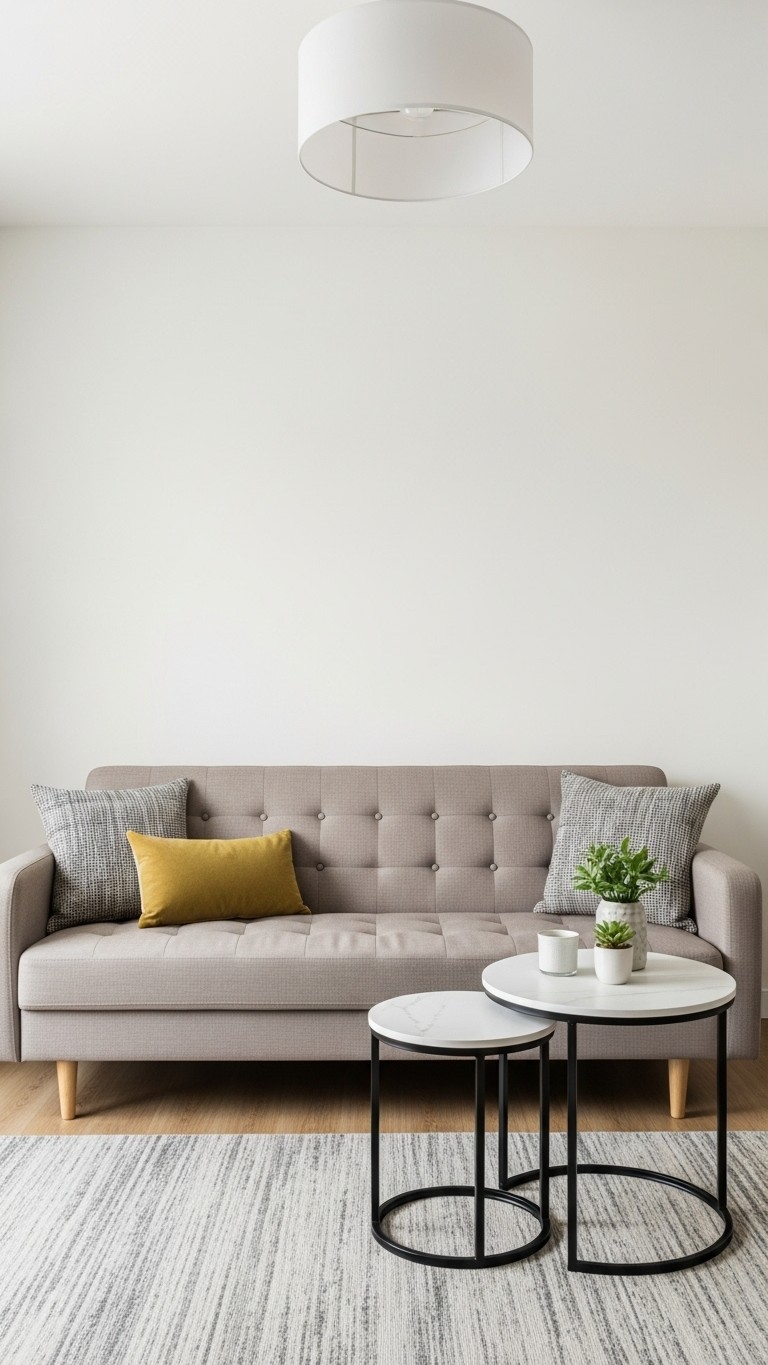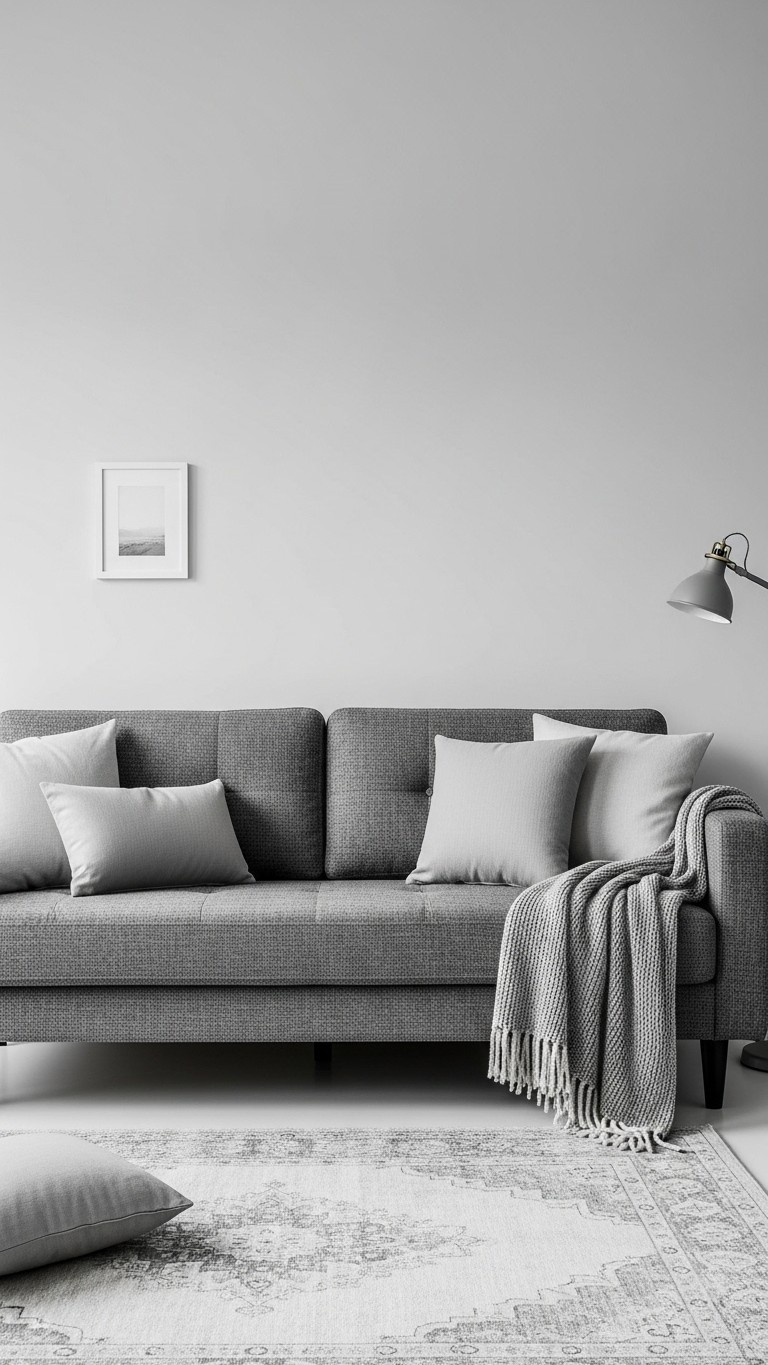Living with a small living room can often feel like a constant puzzle. How do you fit everything you need without feeling cramped? If you dream of an open, airy space but are working with limited square footage, you’ve come to the right place. The great news is, you don’t need a demolition crew to make your room feel bigger—you just need a few clever interior design tricks.
These 11 effective and surprisingly simple hacks are designed to fool the eye, maximize light, and give your living room that spacious, inviting atmosphere you’ve been craving. Get ready to transform your space!
🪞 1. Employ the Power of Mirrors
This is perhaps the most well-known and effective trick for a reason: it flat-out works. Mirrors are a small space’s best friend, capable of visually doubling your room’s size.
The Principle Behind It
Mirrors accomplish two crucial things. First, they reflect any available light, whether it’s natural light from a window or the warm glow from a lamp, and bounce it around the room. This instantly makes the space feel brighter and more open. Secondly, they reflect the room itself, building an illusion of depth that makes the walls seem farther away than they actually are.
How to Put It into Practice
For the biggest impact, position a large mirror on the wall directly opposite your main source of natural light. If you don’t have space for a massive mirror, consider hanging a curated gallery of smaller, interestingly shaped mirrors. Another stylish option is to lean a tall, full-length floor mirror against a wall, which also helps to draw the eye upward.
🛋️ 2. Let Your Furniture Have Some Leg Room
Heavy furniture that sits flat on the floor can make a room feel anchored and heavy. The solution is simple: give your furniture legs!
The Principle Behind It
When furniture is raised on visible legs, your line of sight is not obstructed. You can see the floor continuing underneath the piece, which signals to your brain that the room is larger. This technique reduces the “visual weight” of your furniture, allowing light and air to circulate more freely and contributing to an overall feeling of lightness and openness.
How to Put It into Practice
When selecting sofas, armchairs, media consoles, or side tables, specifically look for designs that are elevated on slender legs. Styles like Mid-century modern or Scandinavian are often excellent examples of this. The more floor space you can keep visible, the more expansive your room will feel.
🦒 3. Think Vertically, Not Horizontally
When you’re short on horizontal space, your best asset is your vertical space. Guiding the eye upward makes a room feel taller and more grand.
The Principle Behind It
Drawing attention towards the ceiling counteracts the closed-in feeling that can come with a small floor plan. By emphasizing the room’s height, you build a sense of volume and grandeur, making the space feel less confined and more impressive.
How to Put It into Practice
Choose tall, narrow bookcases instead of low, wide ones. Hang a single, dramatic piece of vertical art or arrange a gallery wall in a vertical column. A tall, slender floor lamp or a climbing plant like a Pothos on a high shelf can also effectively guide the gaze upwards.
🖼️ 4. Master the High-and-Wide Curtain Technique
This quick adjustment to your window treatments can have a more profound impact than almost any other change. The way you frame your windows sets the stage for the whole room.
The Principle Behind It
Hanging your curtain rod much higher and wider than the actual window frame fools the eye into perceiving the window as being far more substantial. This not only lets in more light when the curtains are open but also makes the entire wall feel taller and wider.
How to Put It into Practice
Mount your curtain rod at least 4-6 inches (10-15 cm) above the window frame, and extend it 3-6 inches (7-15 cm) beyond the frame on each side. Always use curtains that are long enough to graze the floor. Opt for lightweight fabrics and colors that coordinate with your wall color to enhance the seamless, expansive effect.
☁️ 5. Embrace a Light & Airy Color Palette
Dark, saturated paint colors can be cozy, but in a confined area, they absorb light and can make the walls feel as if they are closing in on you.
The Principle Behind It
Light and neutral colors—like shades of white, soft grey, warm beige, and gentle pastels—are inherently reflective. They bounce light around the space, making the walls seem to recede. This simple act of light reflection makes any room feel instantly brighter, larger, and more serene.
How to Put It into Practice
Paint your walls in a proven light, neutral color. For maximum effect, also select your largest furniture items, such as the sofa, in a similar light tone. This doesn’t sentence you to a boring room! You can layer in plenty of personality with colorful throw pillows, artwork, a vibrant accent chair, or beautiful green houseplants.
📐 6. Go Big With Your Area Rug
It sounds contradictory, but a tiny rug in a small living room—often called a “postage stamp” rug—will only make your room look smaller.
The Principle Behind It
A small rug visually breaks up the floor, highlighting the lack of space. A generously sized area rug, on the other hand, works to unify the space. It grounds the furniture and defines the living area, making the entire zone feel cohesive and therefore larger.
How to Put It into Practice
Follow this simple rule: your rug should be large enough so that at least the front legs of your sofa and any accompanying armchairs can sit comfortably on it. A rug with a simple pattern or light color will further enhance the sense of space.
💎 7. Choose “Invisible” Furniture
How can you add a functional surface like a coffee table without adding visual bulk? Think transparent.
The Principle Behind It
Furniture made from clear materials like acrylic (lucite) or glass occupies physical space without taking up any visual space. Your eye passes right through it to the floor or rug beyond, which prevents the room from feeling cluttered and crowded. It’s a functional item that’s practically invisible.
How to Put It into Practice
Swap out a heavy, solid wood coffee table for a sleek acrylic “waterfall” table or a design with a glass top and thin metal legs. A clear console table behind the sofa or along a wall is another fantastic option for adding a surface without the weight.
💡 8. Devise a Smart Lighting Plan
Relying on a single, central ceiling light is a common mistake that can leave corners dark and gloomy, visually shrinking the room.
The Principle Behind It
A well-lit room always appears larger. By layering your lighting—using multiple light sources at different heights—you wash away shadows and draw the eye around the entire space. This illuminates every corner and builds a warm, inviting, and expansive atmosphere.
How to Put It into Practice
Aim for at least three points of light. Combine your ambient light (the overhead fixture) with task lighting (like a reading lamp by a chair) and accent lighting (a floor lamp in a corner or a small lamp on a bookshelf).
📦 9. Select Multi-Functional Pieces
In a compact living room, every piece of furniture should work hard. Choosing items that serve double duty is the key to reducing clutter and maximizing functionality.
The Principle Behind It
By combining uses into a single piece of furniture, you reduce the total number of items needed in the room. Fewer individual pieces means less visual clutter, which directly translates to a more open and organized-feeling space.
How to Put It into Practice
Opt for a storage ottoman that can act as a coffee table (just add a tray on top), extra seating for guests, and a hidden home for blankets and remotes. Consider nesting side tables that can be tucked away when not in use, or a C-table that can slide over the sofa arm for a laptop.
⚖️ 10. Pay Attention to Furniture Scale
One of the quickest ways to overwhelm a small room is to fill it with oversized, bulky furniture. Getting the scale right is non-negotiable.
The Principle Behind It
Furniture that is too large for a space will instantly make it feel cramped and difficult to navigate. Properly scaled pieces, on the other hand, respect the room’s dimensions and allow for comfortable flow, which reinforces a sense of order and space.
How to Put It into Practice
Look specifically for furniture labeled “apartment-sized” or “small-scale.” These pieces often feature slimmer arms, a shallower seat depth, and a lower profile. Before you commit to a purchase, use painter’s tape to outline the item’s dimensions on your floor to see exactly how it will fit.
🎨 11. Adopt a Monochromatic Color Scheme
This is a sophisticated approach that designers use to give spaces a seamless and expansive feel.
The Principle Behind It
Using various shades, tints, and tones of a single color eliminates high contrast, which can visually chop up a room. Instead, the eye flows smoothly and uninterruptedly from one surface to the next. This unbroken visual journey helps the entire space feel larger and more unified.
How to Put It into Practice
Choose one main color (like grey, blue, or beige) and use different versions of it throughout the room. To keep it from feeling flat, introduce a wide variety of textures. For example, combine a light grey wall with a charcoal grey linen sofa, a chunky knit grey throw, velvet grey pillows, and a grey rug with a subtle pattern. The textural differences will build visual interest and depth.
With these clever hacks in your toolkit, you’re well on your way to a living room that not only looks bigger but feels wonderfully open and stylish.
Which of these tips are you excited to try first? Do you have another favorite small-space solution? Share it in the comments below!


